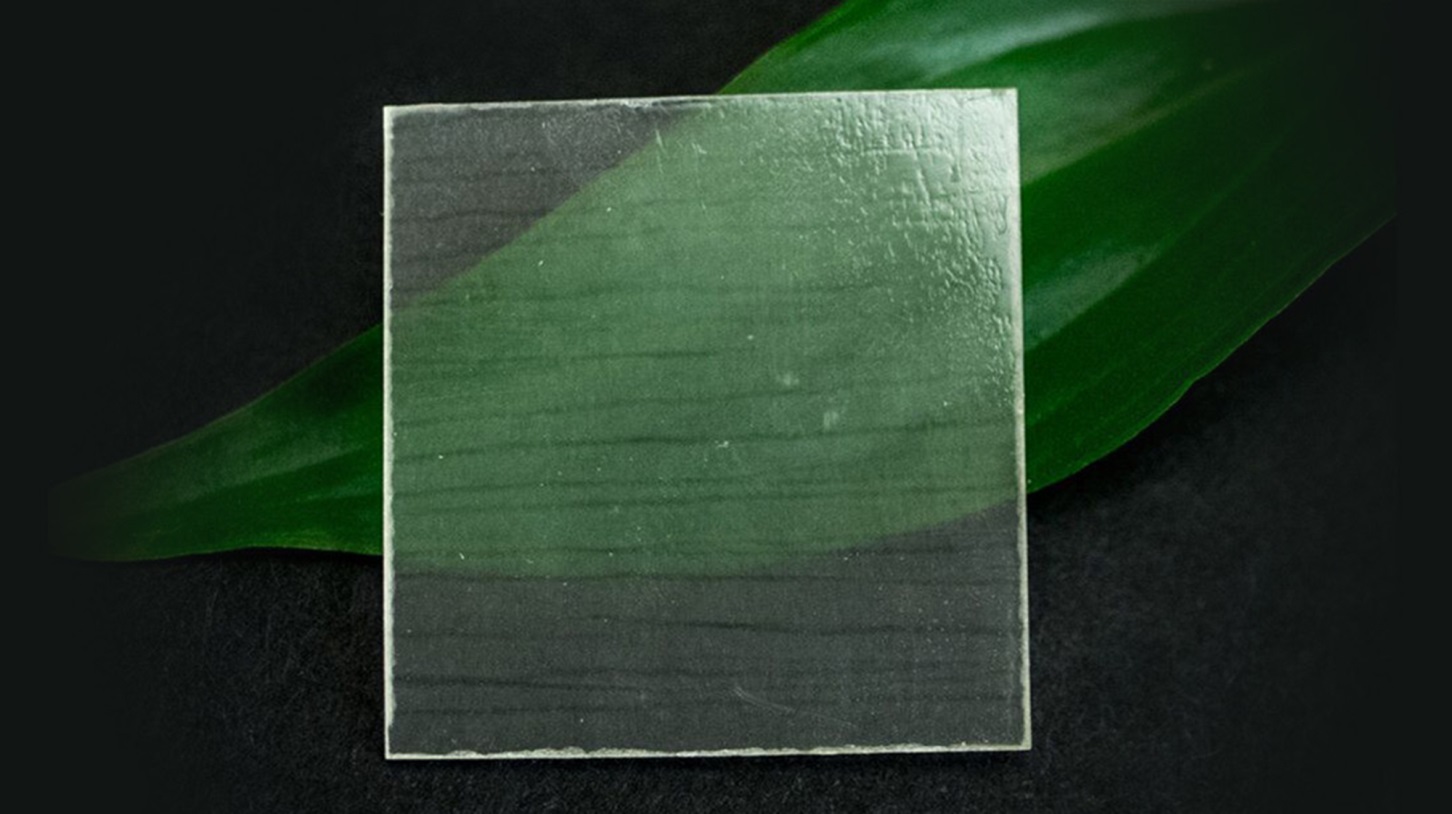
Transparent Wood
Description:
Building Material Category: Boards, Panels and Planks
Building Component Type: Fenestration- Doors and Windows
Alternative for Conventional Building Material: Traditional glass or acrylic panels. Conventional wood and composite materials used for windows, facades, and partitions.
Introduction: Transparent wood is a groundbreaking building material that combines the natural properties of wood with advanced processing techniques to create a semi-transparent, eco-friendly material. This innovation involves treating wood with chemicals to remove its lignin, which is then replaced with a transparent polymer. The result is a material that maintains the wood's structural characteristics while allowing light to pass through, providing both aesthetic and functional benefits.
The primary advantage of transparent wood is its ability to allow natural light to pass through while maintaining the strength and durability of traditional wood. This material offers a unique aesthetic appeal, combining the warm, organic texture of wood with the visual lightness of glass. It is particularly valued for its applications in architectural design where both light and privacy are important, such as in facades, windows, and interior partitions.
Transparent wood not only contributes to aesthetic and functional design but also offers environmental benefits. By utilizing renewable wood resources and improving energy efficiency through better light management, transparent wood supports sustainable building practices. It helps reduce reliance on artificial lighting and can contribute to lower energy consumption, thereby reducing the overall carbon footprint of buildings.
Composition: The base material used is wood, typically from softwood species such as pine or spruce. For processing, lignin, the component responsible for wood’s color and opacity, is removed through chemical treatment. The lignin is replaced with a transparent polymer, such as epoxy or acrylic, which enhances the wood's translucency and durability.
Applicability in Climatic Zone: For warm and humid climate it is effective in applications where natural light and ventilation are desired while maintaining shade and privacy. It helps manage indoor temperatures by reducing direct sunlight. For temperate climate it is useful for enhancing natural light and insulation in buildings, contributing to energy efficiency. For hot and dry climate, it provides a balance between light transmission and heat insulation, helping to maintain comfortable indoor temperatures.
Use: It can be used for architectural facades enhancing building aesthetics while allowing natural light to penetrate. It can also be used in windows and skylights for improved light transmission and thermal insulation. It can be employed in partitions, decorative panels, and other design elements where both light and privacy are important.
Thermal Performance: It provides moderate insulation properties, helping to reduce heat loss and improve energy efficiency in buildings. The material’s translucency can contribute to better heat regulation by controlling the amount of solar heat entering a space.
Thermal Conductivity: It is generally low compared to traditional glass, but specifics can vary depending on the polymer used in the treatment process. Its typical values range from 0.1 to 0.3 W/m·K.
Thermal Transmittance: It allows for natural light transmission while providing some degree of thermal insulation. The exact performance depends on the polymer and wood combination used.
Reduction in CO2 Emission: The use of renewable wood and the potential for longer-lasting materials contribute to a reduction in overall carbon footprint. By enhancing the efficiency of natural light use and reducing reliance on artificial lighting, transparent wood contributes to lower energy consumption and associated CO2 emissions.
Salient Features:
- Aesthetic Appeal: It offers a unique visual effect with the natural texture of wood visible through its translucent surface.
- Natural Light Transmission: It allows daylight to penetrate spaces, reducing the need for artificial lighting.
- Strength and Durability: It maintains the structural integrity of wood while providing additional protection through the polymer.
- Eco-Friendly: It utilizes renewable resources and contributes to sustainable building practices.
- Customization: It can be tailored to different translucency levels and finishes according to design requirements.
Indian Codes:
- IS 4020:1997 - Methods of testing small clear specimens of timber:Provides testing methods relevant to wood properties, though not specifically for transparent wood.
- IS 16261 (Part 1): 2015 - Building Construction – Wood and Wood-Based Products:Relevant for standards on wood products in construction, applicable in context but not specifically for transparent wood.
International Codes:
- ASTM D198-16: Standard Test Methods of Static Tests of Lumber in Structural Sizes:Provides guidelines relevant to wood performance.
- ISO 3340: Wood-based panels – Determination of moisture content:Includes standards for wood moisture content, relevant to the treatment processes for transparent wood.
- BS 5228: Code of practice for noise and vibration control on construction and open sites:Offers insights into noise control relevant for materials like transparent wood used in building facades.
Sources: